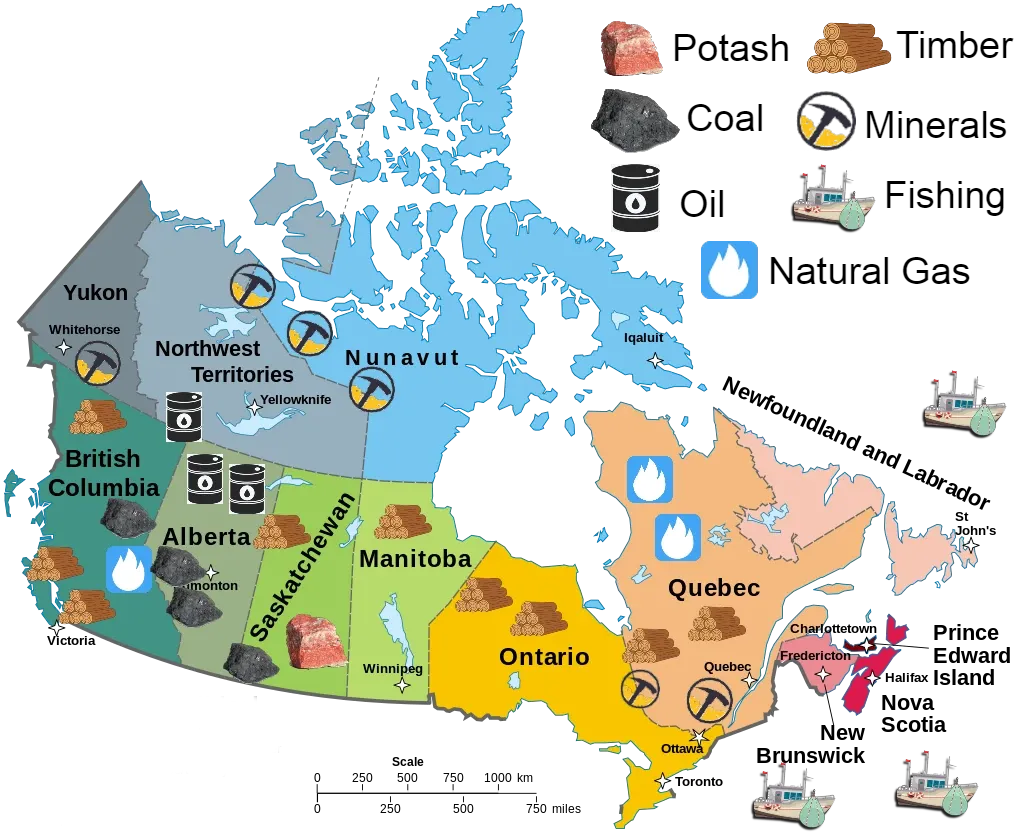Canada’s Natural Resources

Canada is a vast and diverse country with varied physical features that have made the country rich with natural resources. Canada’s natural resources include valuable metals and minerals, fossil fuels, timber, fertile soil, potash, freshwater, and marine resources.
Minerals and metals are significant natural resources found in Canada. This country is one of the world’s top gold producers with mines located in the provinces of Ontario and Quebec. British Columbia is the largest mining province in Canada, with mines for copper, gold, silver, lead, and zinc.
Fossil fuels such as coal, oil, and natural gas are also extracted in Canada. Most of Canada’s coal mines are located in Alberta and British Columbia but can also be found in Saskatchewan and New Brunswick. Canada is the world’s fourth largest oil producer, with most of its reserves found in Alberta. Natural gas reservoirs are found in the southwest part of the country in Alberta, Saskatchewan, and British Colombia.
Canada has, however, begun moving forward on its promise to limit or end subsidies for fossil fuels in hopes of combating climate change.

Approximately 40% of Canada is covered by forests. The majority of these forests are found in the north, including the provinces of British Columbia, Alberta, and the Northwest Territories. The timber industry here produces lumber and wood pulp used to make paper.
The prairie provinces of Alberta, Saskatchewan, and Manitoba are known as the “Breadbasket of Canada” as the rich fertile soil here provides ideal conditions for growing crops and other agricultural products.
Potash is the common name for salt compounds that contain potassium and is used in the production of fertilizer. Canada is the world's largest producer of potash and is responsible for 60% of the world’s fertilizer supply.
Canada’s rivers and lakes contain about 20% of the world’s freshwater. Their freshwater is critical for safe drinking water, supporting agriculture, and hydroelectric power generation. Most of Canada’s hydroelectric power generation is found in Ontario and Quebec.
Canada has an extensive coastline with an abundance of fish that includes cod, salmon, and haddock. Most of Canada’s fishing industries are located in Newfoundland and Labrador, British Columbia, and Nova Scotia.
Canada’s resources are spread across the nation, contributing to its prosperity and global significance. The country’s abundant natural resources play a crucial role in its economy and have a significant impact on its people’s way of life.